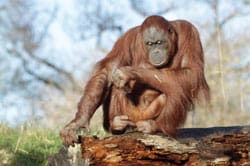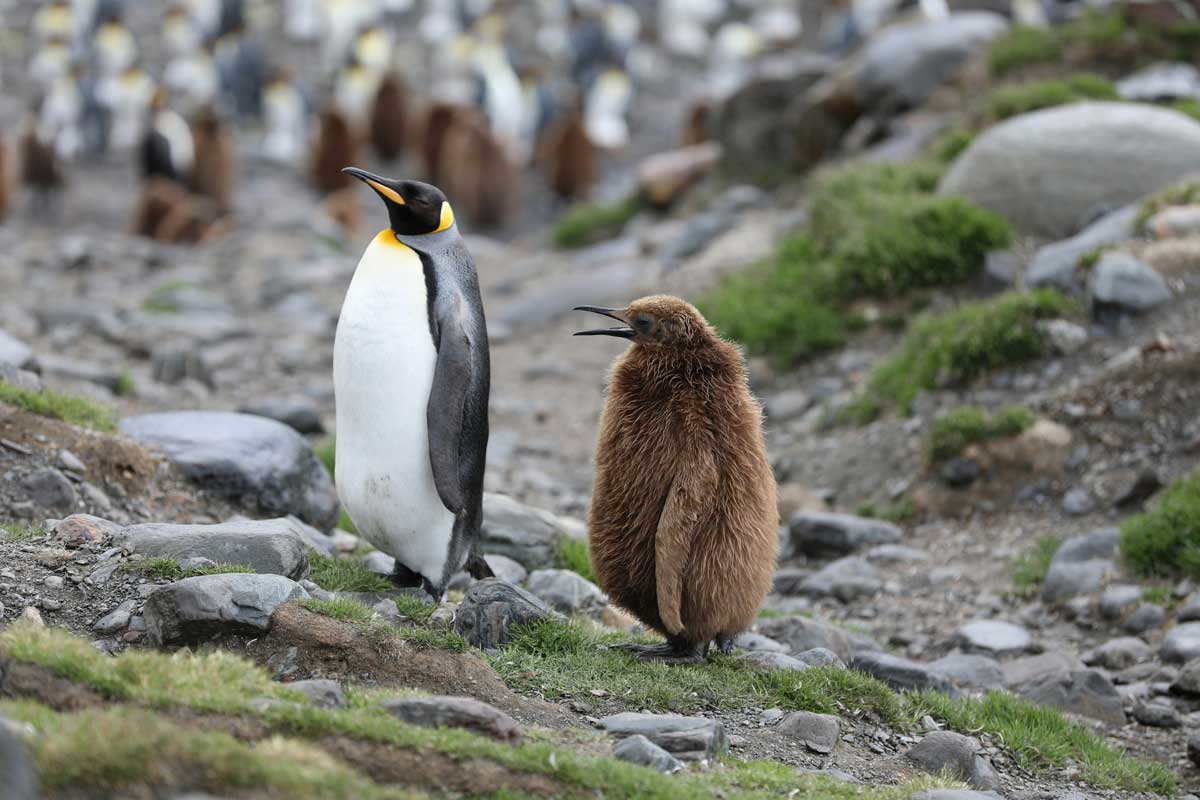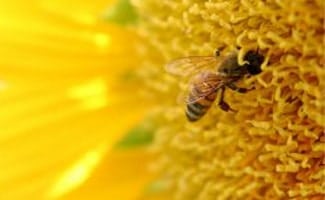Facts About Orangutans
 Orangutans are known by many from their brightly colored hair; however, this incredible ape has many more amazing qualities aside from that distinctive hair color. The orangutan is the only exclusively Asian great ape genus and is also one of the most intelligent primates alive today. While many dismiss this fluffy looking critter as being of lesser intelligence than the better known chimpanzee or gorilla, the orangutan shares a great many features with these better known apes as well as with human beings. The orangutan certainly has aspects that separate it from other great apes but the similarities that it shares with both humans and other great apes make it one species that the planet should be concerned over losing. It is not that one species deserves life more so than another; however, the amount of information that research scientists could learn from studying these human like great apes is of particular value to the human race.
Orangutans are known by many from their brightly colored hair; however, this incredible ape has many more amazing qualities aside from that distinctive hair color. The orangutan is the only exclusively Asian great ape genus and is also one of the most intelligent primates alive today. While many dismiss this fluffy looking critter as being of lesser intelligence than the better known chimpanzee or gorilla, the orangutan shares a great many features with these better known apes as well as with human beings. The orangutan certainly has aspects that separate it from other great apes but the similarities that it shares with both humans and other great apes make it one species that the planet should be concerned over losing. It is not that one species deserves life more so than another; however, the amount of information that research scientists could learn from studying these human like great apes is of particular value to the human race.
Orangutan Facts
Throughout this article you’ll learn the ins and outs of one of the most remarkable primates to ever walk the Earth. We hope that you take this knowledge and share it with your friends, family, and coworkers, and spread the awareness concerning their endangerment. If our planet were to lose this valuable species, we would lose a connection to nature that could provide us with information necessary to, ultimately, sustain our own existence on planet Earth.
Fact: Orangutans Live Mainly in Trees
The name orangutan translates to mean “person or man of the forest.” The orangutan is, as mentioned above, an exclusively Asian primate and is found specifically in Sumatra and Borneo. The orangutan lives solely within the tropical rainforests in the wild and makes its home within the trees, rarely coming down to the ground or standing. The orangutan is far more at home when it is swinging in or sitting in the trees where they are not only able to obtain food but they are also able to obtain water that has collected in the trees where they live. Due to the orangutans reliance on its arms rather than its legs for locomotion the arms of the orangutan are particularly strong as well as flexible, enabling these large primates to swing rapidly and carry their body weight.
Why Don’t Orangutans Spend Time on the Ground?
The average adult male orangutan has an arm span of around 7 feet from fingertip to fingertip and those fingertips are extremely dexterous. With 90% of their time spent in the trees the orangutans fingers must be extremely strong and dexterous in order to facilitate movement through the trees. The orangutan maintains life in the trees to stay safe from the larger predators that could easily snatch up an orangutan from the rainforest floor. The orangutan even sleeps in the trees by creating a nest out of leaves and branches that is sturdy enough to hold their weight. During the day the orangutan also forages in the trees to find food. The orangutan commonly feeds on fruit picked from the trees within its territory but they have also been known to feed on tree bark, insects, soil, leaves, young shoots, eggs and small creatures. The orangutan does not generally sway towards eating meat; however they will if needs be. As for water, the orangutan collects water from holes in trees.
While the orangutan prefers life in the trees they do occasionally come down to the ground and when they do they walk on all fours. The forelimbs are utilized as legs but unlike many other apes when the orangutan walks on the forelimbs it utilizes the palms or fists as feet rather than the knuckles. The time that the orangutan spends on the ground; however, is limited because the high trees of the rainforest not only give these beautiful creatures protection from predation but they also offer comfort. The orangutan is happiest when brachiating (swinging) through trees or hanging upside down – something that these incredibly strong creatures can do for long period of time.
Bornean and Sumatran Orangutans
How Big are Orangutans?
 The orangutan is known for having two individual species, the Sumatran (pongo abelii) and the Bornean (Pongo pygmaeus). On average the orangutan measures in at between 4 to 6 feet tall and weighs around 65 to 260 pounds. The female orangutan generally weighs between 65 to 110 pounds, whereas the male orangutan generally weighs between 110 to 260 pounds.
The orangutan is known for having two individual species, the Sumatran (pongo abelii) and the Bornean (Pongo pygmaeus). On average the orangutan measures in at between 4 to 6 feet tall and weighs around 65 to 260 pounds. The female orangutan generally weighs between 65 to 110 pounds, whereas the male orangutan generally weighs between 110 to 260 pounds.
Male vs. Female Orangutan
Size isn’t the only distinguishing factor that sets the male orangutan apart from the female orangutan; there are also other physiological features that distinguish male and female orangutans. The most distinctive feature of a male orangutan is the cheek flaps which grow larger as the male orangutan grows. These cheek flaps give the adult male orangutan the look of having a rather flattened face; however, these large cheek flaps serve to illustrate an orangutan’s dominance. The more dominant an adult male orangutan is the larger his cheek flaps will be. These large cheek flaps not only signal to other male orangutans that they are going up against the “boss” but they also signal to female orangutans that the adult male orangutan is dominant enough to make a good prospect for mating. Male and female orangutans are not only different in their physiology; however, the two genders of the species generally opt to live separately only converging during mating season.
Fact: Orangutans Are Solitary Creatures
Surprisingly to many the orangutan is something of a solitary creature and tends to prefer life alone…at least that can be said for the males of the species. The female adult orangutan who has given birth lives with her young sometimes for as long as 7 years or until the young have learned to fend for themselves. The average orangutan lives between 30 to 40 years in the wild and the female orangutan reaches sexual maturity between 10 to 15 years of age depending on the species of orangutan as well as the individual in question. Adult female orangutans are thought to give birth only once every 8 years allowing them the chance to properly care for and raise their young before giving birth again. Generally the adult female orangutan gives birth to only one baby at a time although occasionally they do give birth to twins. It is believed that a culmination of all of these factors: long periods of childhood, the length of time taken to reach sexual maturity, and the birth of just one infant at a time is one of the many factors that has put this species at such high risk for extinction. Unfortunately for the orangutan another unfortunate side effect of having such a slow population growth rate is that when disaster or disease does strike the population takes a considerably long time to bounce back.
Why Are Orangutans Endangered?
Another factor that contributes heavily to the endangered status of the orangutan is their habitat. The orangutan can only survive in specific areas of the globe and within those specific areas they have particular demands, more to the point, they need the rainforests of these areas to survive. With increased logging and deforestation that is taking place in these areas the orangutan is not only rapidly losing land but they are also losing food. While the orangutans do not live together as families they do occupy the same rainforests and their territories often overlap. Male orangutans intentionally overlap their territories with female orangutans in order to attract mates and males generally put up with each other by avoiding each other. Adult male orangutans manage to avoid each other even when their territory overlaps by utilizing loud calls to warn of their movement within the rainforest. With decreased forest area for the orangutans to spread out through; however, the entire orangutan population is undergoing rapid change which is forcing them in to smaller territories and close proximity to other orangutans. Whether or not the orangutans can tolerate each other in such close quarters is not the only factor which influences these great creatures, however, because with many more mouths to feed in one much smaller location competition becomes fierce.
Why Are Orangutans Hunted?
In addition to the deforestation and logging that are pushing orangutans to the brink of extinction, these great primates also have to face extinction thanks to poaching. Orangutans are hunted for a couple of different reasons but in certain parts of the world these majestic creatures are being hunted for food. In certain societies orangutan meat is considered a delicacy even though it is forbidden to kill them. Another reason for hunting orangutans is as a way to deter them from destroying crops of local communities. When orangutans are forced to compete for smaller amounts of food due to deforestation and logging they often move in to local areas where crops are being grown and help themselves to what they need in order to survive. This theft from local farms causes destruction for the farmers and as a way to discourage it from happening again farmers often shoot and kill orangutans to save their crops.
Orangutan Rescue Efforts
Many organizations have come together to try and boost efforts at trying to rescue this creature from extinction. Most conservation efforts involve utilizing wildlife reserves that work to protect the areas of the rainforest that are most valuable to the orangutan. There are also institutions that take in orphaned baby orangutans and try to teach them how to survive in the wild. One of the better known rescue efforts that utilizes a rehabilitation center is the Nyaru Menteng Orangutan Rescue in Borneo that was featured on the Discovery Channel’s “Orangutan Island”. Here orangutans are prepared for life in the wild and released to islands that are monitored closely by the rescue in order to ensure that the orangutans are ready to survive on their own. After surviving three seasons on the monitored islands the orangutans are then released in to the wild in order to help boost the orangutan population in Borneo.
The Intelligence of the Orangutan
Orangutans are known as being the world’s largest arboreal animals and although not too much fossilized evidence is available to track the evolution of the species, biologists are certain that this primate has a particularly important place in evolution. The orangutan is one of the most intelligent primates and has been observed by biologists utilizing advanced skills such as tool use. Orangutans have been seen utilizing tools to extract insects from trees, to extract seeds from fruit, to communicate with each other and to build nests. It is obvious from observation of these intelligent creatures that they are capable of much more than simply tool use; however, as one study found that some wild orangutans actually utilize large leaves to amplify their communication methods in order to make themselves sound larger than they actually are. Such intelligent thought is certainly not observable in many other species and is obvious evidence of intelligent thought, utilization of the memory and utilization of concepts such as “if I do this, then this will happen.” There are not many creatures on the face of the planet that are capable of such advanced thought patterns and such intelligent behavior.
The Human Qualities of the Orangutan
 Intelligence is not the only aspect of the orangutan that gives it such human like qualities, however, many of the communication and social skills that the orangutan possesses have significantly human rings to them. In 2008 at Leipzig Zoo a study of two orangutans revealed that the orangutans were able to calculate reciprocity in gift exchanges, until that point no other creature with the exception of humans had shown this characteristic. Other locations such as the Atlanta Zoo have utilized computer systems to encourage communication by the orangutans in a form which zoo keepers and trainers can understand. Currently the two Sumatran orangutans that utilize the computer system are only playing games which are intended to help them learn how to communicate but it is the hopes of the Zoo Atlanta keepers that the orangutans will soon be able to collect data on socializing patterns including mimicking behavior and learning through trial and error. It is the hope of the zoo keepers and trainers that they will be able to compile enough data in reference to the orangutans to develop new conservation strategies that can be utilized effectively to help to protect the orangutans and bring them back from the verge of extinction.
Intelligence is not the only aspect of the orangutan that gives it such human like qualities, however, many of the communication and social skills that the orangutan possesses have significantly human rings to them. In 2008 at Leipzig Zoo a study of two orangutans revealed that the orangutans were able to calculate reciprocity in gift exchanges, until that point no other creature with the exception of humans had shown this characteristic. Other locations such as the Atlanta Zoo have utilized computer systems to encourage communication by the orangutans in a form which zoo keepers and trainers can understand. Currently the two Sumatran orangutans that utilize the computer system are only playing games which are intended to help them learn how to communicate but it is the hopes of the Zoo Atlanta keepers that the orangutans will soon be able to collect data on socializing patterns including mimicking behavior and learning through trial and error. It is the hope of the zoo keepers and trainers that they will be able to compile enough data in reference to the orangutans to develop new conservation strategies that can be utilized effectively to help to protect the orangutans and bring them back from the verge of extinction.
Like many of the more intelligent primates orangutans have also been shown to display human characteristics in their daily life in terms of emotion and routine as well. Scientists believe that orangutans are capable of laughter vocalizations that are emitted when the orangutan is happy with something. Mother orangutans also display more complex mothering instincts which allow them to raise their young to become completely independent with seven years of training under their belt. The orangutan is the only known primate to have such a long period of “nursing” with their young and while it may serve the infants well to receive such long periods of protection from their mothers, one has to wonder whether shorter periods of childhood and increased incidences of breeding would perhaps increase the orangutan population significantly enough to push the orangutan out of the category of endangered species.
Orangutan Population Estimates
While no one can know for certain just how endangered the orangutan population is due to the dense nature of their habitat, current estimations show a continued decline of the overall orangutan populations from previous years. Currently there are estimated to be around 6,667 Sumatran Orangutans living in the wild in Sumatra. There are some 11,017 estimated Northeast Bornean Orangutans living in Sabah, 4,825 Northeast Bornean Orangutans living in East Kalimantan, more than 31,100 Central Bornean Orangutans in Central Kalimantan and some 7,425 Northwest Bornean Orangutans living in West Kalimantan and Sarawak. These numbers may seem large and somewhat impressive but in terms of the survival of an entire species they are dismal. Compared to population estimations prior, these numbers show a significant decline in the orangutan populations. Much of this population decline is a direct result of many young orangutans not making it to adulthood as a result of deforestation, logging, hunting, and capturing of baby orangutans as pets by the surrounding people in the villages.
Why Should We Save The Orangutan Populations?
The orangutan deserves to survive just as any other creature on this Earth does but for this intelligent creature the irony of the situation is uncanny. A creature so similar to our own race, a creature that could provide valuable information in terms of genetic development and missing links to the human race and it is the human race that is causing such a large population decline. Due to the relatively slow growth rate of the orangutan populations it is not possible to create a fast remedy for the orangutan species that face the biggest threat; however, there is still plenty that can be done to help this species to survive. With increased donations to legitimate conservation foundations conservation efforts can be increased and more orangutans can be rescued, rehabilitated and taught how to survive in their natural habitat – this alone can have a huge positive impact on the orangutan population. It is not only monetary donations, however, that can help this species to survive, spreading awareness of the struggling orangutan populations, refusing to support companies that harvest their lumber from orangutan habitats and discouraging the exotic pet trade are just a few of the other ways that you can impact the growth and survival of the orangutan population.
Fact: Saving A Species Isn’t Out Of Reach
Saving a species seems like such a disconnected concept, something that no one could ever accomplish and certainly one of those instances where many of us wonder “what good will my $10 do?” The answer in the case of orangutan conservation efforts is: a lot! As little as $10 can help to feed orphaned orangutans as well as provide much needed medication to keep the orangutan in the rescue healthy while they are taught the skills they need to survive in the wild. It doesn’t seem feasible when looking at it from a single point of view but when considering the effect of a large group of people caring enough to donate time, money and energy it doesn’t seem like such an impossible task after all. The orangutan may seem like a creature from far away that has little impact on every day modern life, but who knows what links lie within the connection between this incredible great ape and the human race? Without conservation efforts, we may never know!
Orangutan Video
This video, from the BBC’s Life of Mammals series, shows you just how (almost eerily) similar these big apes are to us. You’ll see an ape row a boat, saw a piece of wood, interact with humans and other animals, even engage in sign language. Here’s a little preview video of the show, courtesy of the BBC.



